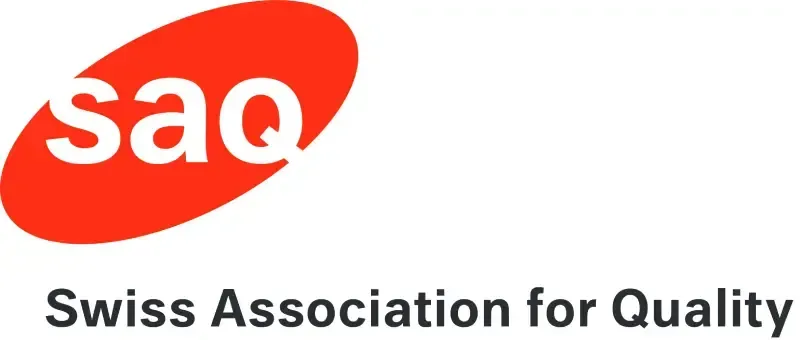AI & Compliance:
EU Act, Data Literacy Act and Data Protection for SMBs
The regulation of Artificial Intelligence (AI) is accelerating rapidly. With the EU AI Act, GDPR, Swiss Data Protection Act, and new copyright requirements, companies and public institutions must ensure that their use of AI systems is legally compliant. Organizations are now required to document AI-related risks, choose appropriate providers, and train their employees (Art. 4 EU AI Act).
In this hands-on half-day course, legal experts from LEXR legal tech experts and AI experts from VOICETECHHUB will teach you how to understand key legal and technological aspects of AI, actively manage risks, and implement effective compliance measures.
You will gain practical strategies to navigate your organization safely through the new AI regulatory landscape.
- Industry-specific content
- Use cases & data from your environment
- Measurable ROI
- Flexible formats: In-house, virtual or hybrid
- Proven expertise: 12 years of enterprise AI, >6,500+ trained specialists
- EU AI Act-ready curriculum - content & certificate fulfil the new training requirements
Special requirements? Our curriculum team can help.
Course Content
In this course you will benefit from:
Understand the Fundamentals
- Introduction to generative AI, large language models (LLMs), and key AI concepts
- Overview of regulatory frameworks: EU AI Act, GDPR, Swiss DPA
Apply Legal Requirements Securely
- Data usage: When consent is required (Opt-in) and when legitimate interest applies
- Legal obligations and risks associated with using AI tools like ChatGPT, Copilot, Gemini, and Mistral
- Transparency, documentation, and liability duties under the EU AI Act and GDPR
- Copyright and intellectual property rights related to AI-generated content
Practical Implementation
- How to assess AI providers and tools for compliance fitness (Vendor Due Diligence basics)
- First steps to developing internal AI governance concepts
- Using templates and checklists to proactively manage risks
Bonus: Interactive Q&A Session
- Addressing real-world challenges and typical pitfalls with our experts
+ Access to Our Community with daily free learning assets
+ Materials from All Learning Modules and Additional Support Links
+ AI Compliance Certification
+ Prompt Frameworks and Canvas
+ Includes Snacks, Drinks, and great Coffee Networking Opportunities

Target Group
This course is designed for:
- In-house counsel, legal advisors, and privacy officers
- Compliance managers and risk managers
- IT project managers, Chief Digital Officers (CDO), and Chief Technology Officers (CTO)
- HR, marketing, finance, and operations teams implementing or planning AI tools
- Public sector organizations and regulatory authorities
Prerequisites
No technical background required.
Goal
After completing the course, participants will be able to:
- Identify and assess legal risks related to the use of AI
- Understand and apply key requirements of the EU AI Act, GDPR, and Swiss DPA
- Securely implement and evaluate the use of AI tools within their organization
- Build a foundation for internal AI governance structures
- Document compliance activities and fulfill training obligations under the EU AI Act
Format
- You will experience hands-on sessions which are more interactive
- Profit from deep-dives with our market experts into AI tools and AI automation.
- You will have enough time to ask your questions
Choose our Add On:
We create customized AI guidelines and policies for your company – tailored to your industry, tools, and legal needs. Whether you're just starting out or need to formalize existing AI usage: we deliver your documentation, risk checklists, and governance framework. right basis.
👉 Learn moreabout our AI Guideline & Documentation Service
Trainers
Thomas Kuster

Thomas Kuster is a partner at LEXR, the law firm for tech companies. He heads the technology law team and advises on the use of artificial intelligence from a contractual and regulatory perspective.
Nina Habicht

- Entrepreneur in the fields of Conversational AI, Generative AI, Chatbots, Voicebots and Agentic AI
- PM, Project Manager & Designer of several Corporate Chatbots and AI Applications
Extension: Industry-Specific Add-ons for Tailored Compliance
Would you like to deepen your knowledge for your specific industry?
Expand the basic course with an optional
industry-specific add-on designed to address your sector’s unique compliance challenges.
Industry-specific modules (2-hour add-ons each):
- Banking & Finance: Compliance requirements under FINMA guidelines and handling of sensitive financial data
- Pharma & Life Sciences: Data protection, validation, and regulatory demands for healthcare data and AI systems
- Insurance: Avoiding bias, ensuring transparency, and complying with AI regulations in insurance processes
Format: Online or in-house, bookable individually or in combination
We would be happy to advise you on an industry-specific specialization.
Contact Us
Contact Us
Q&A
Practical questions that are answered during the course
1 Which regulations and standards are covered?
The course walks through the EU AI Act article-by-article, the EU GDPR, the Swiss FADP (DSG), and the brand-new management standard ISO/IEC 42001. You’ll get practical checklists that map every requirement to concrete actions.
2 When do the main EU AI Act obligations start to apply?
The Act entered into force on 1 August 2024. Key milestones are:
• 2 Feb 2025 – bans on “unacceptable-risk” AI + AI-literacy duty
• 2 Aug 2025 – governance rules and duties for general-purpose AI models
• 2 Aug 2026 – most other obligations become fully applicable
• 2 Aug 2027 – extended deadline for high-risk AI embedded in regulated products
3 What penalties can non-compliance trigger?
Violating the prohibition rules can cost up to € 35 million or 7 % of global annual turnover. Other breaches carry tiers of € 15 million / 3 % and € 7.5 million / 1.5 % depending on severity.
4 Which take-home materials are included?
You receive a risk-matrix template, ready-to-use AI-policy and DPIA forms, an audit checklist set and a training-evidence form – all mapped to the AI Act articles for easy internal audits.
5 Who should attend and what prior knowledge is required?
Ideal for Compliance, Legal, Risk, IT leads and product owners of AI systems. Basic data-protection familiarity is enough – we start with a concise legal primer, no law degree needed.
6 Can the content be tailored to our industry or use cases?
Absolutely. We run a 30-minute scoping call beforehand to weave your sector-specific high-risk scenarios (e.g. Med-tech vs. Banking) into the exercises and examples.
7 How is data confidentiality safeguarded during the workshop?
Hands-on tasks use synthetic or anonymised datasets only. For on-site sessions we sign an NDA; remote deliveries run on EU-based, end-to-end encrypted learning environments.
8 Do participants receive a recognised certificate?
On passing the final assessment, attendees earn the “AI Compliance Specialist” certificate. It documents the AI-literacy training required under the EU AI Act (Art. 4 §1 i) and fits neatly into ISO/IEC 42001 audit evidence.




